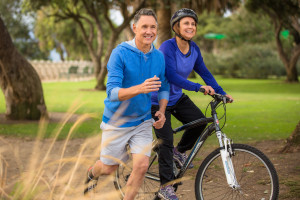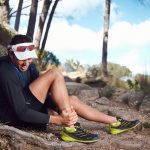The Keys To A Balanced Exercise Program Part 1
Every time we turn on any device now, whether T.V, computer, tablet etc. there seems to be constantly
new reports about increasing obesity among the population, reduced rates of exercise, increased rates
of cardiovascular related diseases i.e. all diseases and conditions of the heart and blood vessels,
diabetes, and so it goes on.
There is also so much information and often contradicting messages on how much to eat, how much to
exercise, when to eat or exercise etc. And for many the confusion can become too much and so it may
seem easier to just do nothing.
So in this and the next blog I’d like to look at, in relation to exercise, what constitutes a good amount and also a balanced program? And let me clarify here that what I am outlining here is balance in terms of a lifetime of exercise, I’m not talking about ‘get fit quick’ or ‘get fit for summer’ type programs. Short term goals only give short term results. I am talking about how to plan your training and exercise in order to be able to have a lifetime of movement and fun
In order to have a balanced exercise program we must cover 4 key areas
– Flexibility and posture
– Aerobic/cardio
– Sport and play
– Functional Strength Training
1. Flexibility and posture
Any form of exercise that helps to maintain joint range of motion, muscle flexibility, core and posture control e.g. Yoga, Pilates, deep tissue/trigger point release massage
2. Aerobic/cardio
This is simply about getting puffed on a regular basis. Anything that helps to raise a sweat, gets the heart rate up and boosts general aerobic and fitness capacity. Ideally this is single plane cardio activity i.e. do something in a straight line and do it for long enough so that your heart and lungs are stimulated e.g. brisk walk, jog, run for 30 minutes or more, cycling for 30mins-1hr. This is important for long term cardiovascular and respiratory health.
3. Sport and Play
This is something that is least commonly recognized by adults. It involves moving in multiple directions, responding to external stimuli that are unpredictable e.g. not knowing where the ball is going next, not knowing where your son is going to throw the Frisbee, not knowing where the next tennis shot is going to land, you have to respond to stimulus that is external to yourself, you have to change direction rapidly. It stimulates the secondary components of fitness i.e. coordination, agility, hand eye coordination, balance, proprioception.
4. Functional Strength Training
Functional strength training is any training that serves the purpose for which it is intended. It is aimed at improving your ability to perform daily physical tasks with ease, efficiency, strength, control and without pain. It focuses on movements, whole body exercises, supports activities of daily living and sporting activities. For more information on this please see my blog on Functional v Traditional strength training HERE.
Are you sick of just lifting weights on the bench, in a single plane or in isolation? If you would like to learn more about functional strength training and to develop exercises to incorporate into your current gym workout, Peter is a qualified personal trainer and has a keen interest in functional strength training he will empower you with the knowledge to take your gym workouts to another level. These exercises will help you to improve strength, power, core control and dynamic stability. You can contact Peter by emailing him on p.ledwidge@pogophysio.com.au
In my next blog I will look at how much of each of these you should do and how often in order to have a balanced exercise regime.
Author:
Peter Ledwidge
Pilates Instructor and Fitness Coach.
Related Articles
1. Healthy Eating and Exercise – Keep it simple! HERE
2. Progress Not Perfection – Ease Into Exercise HERE
References:Wayne Rodgers, Sports Physiotherapist, B. App. Sc., Grad. Dip. Sports Physio.
www.healthadventure.com.au








